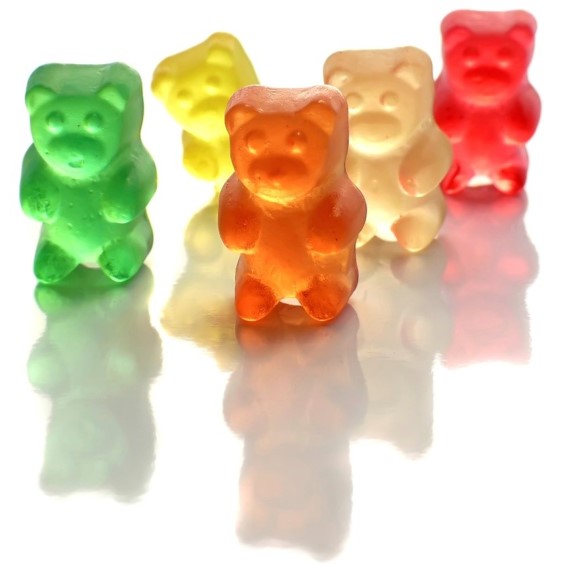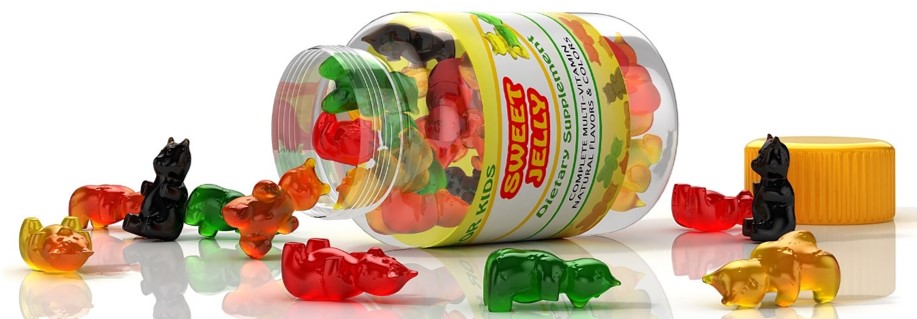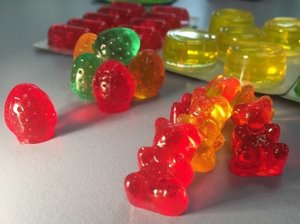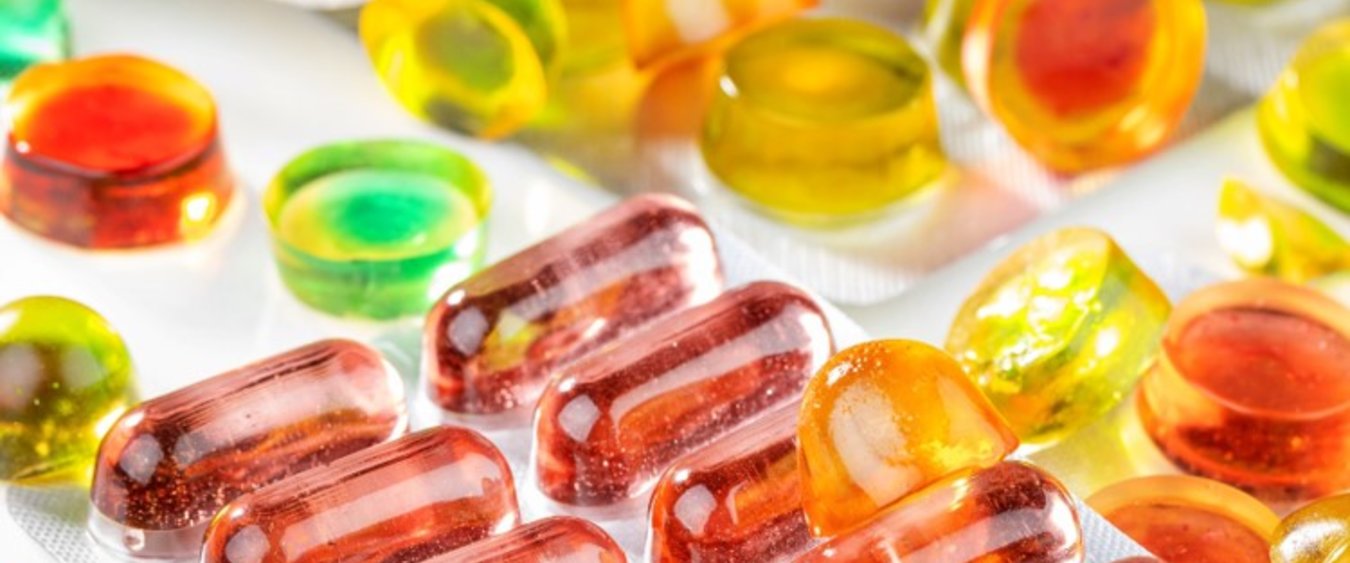Even before German confectionery innovator Hans Riegel establishedthe Haribo candy company and launched gelatin gummy bears in 1922, gelatin-based fruit chews like wine gums and gumdrops had reached market in the UK from the early 1900s.

Gelatin’s first big foray into mass produced food was across the Atlantic Ocean in New York where Jell-O jelly made its debut in 1897, some 50 years after powdered gelatin was first patented.
Gummy bears, sometimes known as jelly babies, gummy worms and fruit gums, are big business – the global gummies and jellies market is worth something like $14bn globally, according to analysts(1).
Vegetarian gummies, mainly made with pectin, have won a niche in the market, but gelatin’s superior mouthfeel, transparency, and cost efficiency ensures its ongoing dominance of the category. The fact gelatin is a collagen-derived, clean label natural protein that requires no E number in Europe also helps.
The rise of functional gummies
However, today’s growth in the gummy bear category is not coming from the traditional gummy market but from functional gummies typically sold as nutraceuticals or even pharmaceutical APIs usually in the form of vitamin gummies.

In the US dietary supplements market, gummies have quickly become the second most popular format after pills/tablets. According to Nutrition Business Journal nutraceutical gummy bear sales rose 6% to account for 13% of US supplement sales in 2019.
Functional gummies that can include minerals, fibers, probiotics, proteins, collagen, botanicals and more account for some 40% of the $14bn world market – and are predicted to jump from about $6bn to over $10bn in five years according to analyst, Research & Markets.
A brief history of functional food and functional confectionery
The rise of functional gummies and more broadly functional confectionery can be traced back to the 1990s when food formulation advances permitted the addition of nutrients to a wide range of foods under the moniker of functional foods and functional beverages.
Some isolated examples of functional foods did exist before the 1990s – think Kellogg’s Corn Flakes fortified with vitamins in the 1930s or Yakult probiotic drinking yogurt debuting in the 1950s in Japan. Even vitamin-fortified throat lozenges could be considered functional confectionery or medicinal food.
But it was the 1990s convergence of formulation and nutrition science progress, coupled with a growing public interest in health and wellness and disease prevention that saw functional foods move into the mainstream imagination.
Suddenly every food group was a fortification candidate from dairy to bread to juice to bars to, yes, functional confectionery like chocolate and gummy bears.
Unfortunately, many of them failed or underperformed as consumers failed to feel immediate (enough) health benefits from the functional foods they consumed. Energy drinks being a stark exception.
Other food shoppers were turned off by the idea of medicalising food, or confused by frequently ambiguous nutrition science, sensationalist media coverage and regulator-issued health claims – or the lack of them.
Functional confectionery challenges
Functional confectionery makers had to navigate this terrain as they sought to convince consumers that an indulgence food could be good for them too.
There are very few functional confectionery success stories outside of sugar-reduced gum, chocolate and candy with its direct appeal to those with weight management concerns. Shifting chocolate bars fortified with a plant sterol to improve blood circulation proved a much more difficult proposition.
Functional gummies have been much more successful, but they have held an inherent advantage – selling in dietary supplement and pharmaceutical channels rather than in the regular food supply.
Consumers have been much more willing to consume functional gummies as an alternative to pills as a high numbers of adults and children report having a hard time swallowing. One US survey put 38% of adults in this category.

Functional gummies with gelatin
This functional gummy bear success story is being strengthened by the arrival of new gelatin formulation technologies tailored for functional confectionery.
In the past pectin, agar-agar or other hydrocolloids or blends could be preferred to gelatin due to their very fast gelling time needed in the production process. Today specialty designed gelatins (SiMoGel) are perfect for these fast setting processes which are common among dietary supplement and pharmaceutical API manufacturers
Basically the starch molds typically used to make regular gelatin gummy bears didn’t quite cut it in the nutraceutical and pharmaceutical world where production lines change frequently and drastically and absolute hygiene is required to meet established Good Manufacturing Practices (GMPs).
Gelatin gummy mouthfeel wins

In response, Rousselot developed a specific gelatin– we call it SiMoGel – enabling starchless depositing into hyper-hygienic silicon molds for example so functional gummy manufacturers can offer consumer products boasting the superior mouthfeel wins only gelatin gummies can deliver.
Kids – and adults – no longer have to struggle with less than palatable functional chews and functional gummies.
Latest refinements mean center-filled soft gelatin ‘gummy caps’, a new delivery form invented by Rousselot that can be fortified with nutraceuticals or active pharmaceutical ingredients in higher concentrations and thus resolving what has long been a complex challenge for producers.
The new gelatin also means gummy setting times are significantly reduced to 15 minutes – a batch time commitment many nutraceutical and pharmaceutical players find acceptable compared to 24 hours

Get in touch. We have a team of gelatin experts waiting to help get your project off the ground . . .
(1) Grandview research - Jellies & Gummies Market Size, Share & Trends Analysis Report- 2019 - 2025
